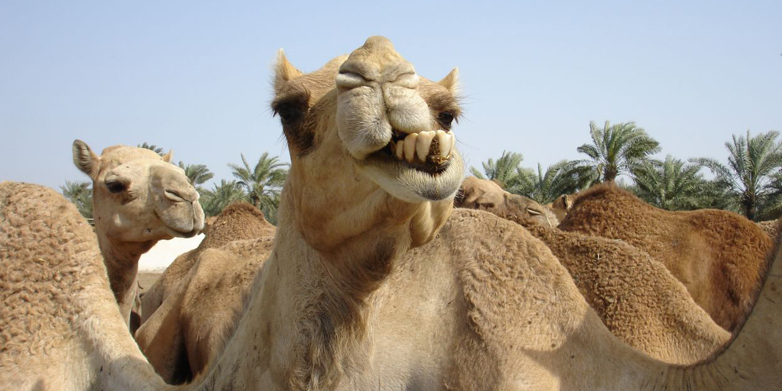Camels emit less methane than cows or sheep
When ruminants digest, they exhale methane. Their contribution to this global greenhouse gas is considerable. So far the assumption had been that camels with similar digestion produce the same amount of the climate-damaging gas. However, researchers have now shown camels release less methane than ruminants.
Ruminant cows and sheep account for a major proportion of the methane produced around the world. Currently around 20 percent of global methane emissions stem from ruminants. In the atmosphere methane contributes to the greenhouse effect – that’s why researchers are looking for ways of reducing methane production by ruminants. Comparatively little is known about the methane production of other animal species – but one thing seems to be clear: Ruminants produce more of the gas per amount of converted feed than other herbivores.
Even though camels regularly “ruminate” biologist don’t refer to them as ruminants. But just the same, camels – including dromedaries, Bactrian camels, alpacas and llamas – have multi-chambered forestomachs. They, too, regurgitate food from the forestomach in order to reduce it in size through renewed chewing. That’s why people assumed up to now that camels produce a similar amount of methane as ruminants.
Lower metabolism – less methane
Researchers at ETH Zurich and the University of Zurich have now examined this assumption in collaboration with the Zurich Zoo and private camel keepers and have measured methane production in three types of camelids. Their result: in relation to their body size camels release less methane than cows and sheep. “To calculate the proportion of methane produced, different estimated values should be used for camels than those used for ruminants”, explains Marcus Clauss from the of the University of Zurich.
However, if one compares methane production with the amount of converted feed, then the ratio is the same in both, camels and ruminants. “The results show us that camels have a lower metabolism. Hence, they need less feed and release less methane than our domestic ruminants”, says the vet Clauss. The lower metabolism of camels could explain why they thrive particularly in areas with a shortage of food – desert and barren mountain regions. The modified calculation of the “methane budget” may be important for those countries with lots of camels – like the dromedaries in the Middle East and in Australia, or the alpacas and llamas in various South American countries.
This text is based on a press release by the University of Zurich.
Literature reference
Dittmann MT, Runge U, Lang RA, Moser D, Galeffi C, Kreuzer M, Clauss M: Methane emission by camelids. PLOS One, 9 April 2014. doi: external page10.1371/journal.pone.0094363call_made

